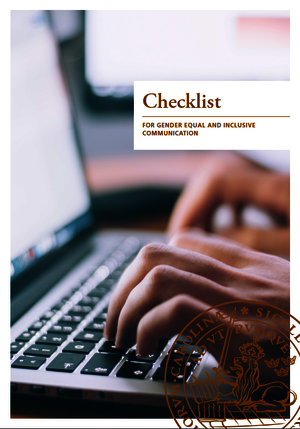Inclusive communication
It is harder to become what you can’t see! We know that it is important to be able to recognise yourself in various media to feel included in society. It is important that not only certain voices, perspectives and bodies get to take up space and be represented. As a public authority, we have a responsibility for including and representing broadly, in a gender equal and socially equal way, in our communication.
Lund University’s strategic plan states that the University’s activities are to contribute to understanding, explaining and improving our world. As communications officers, we can, through our choice of language and images in communication, work actively to counteract preconceptions and exclusion of certain groups. In the long run, this can mean more people having a chance to be heard and seen in a gender equal and socially equal way, with reference to the seven grounds on which discrimination occurs. This, in turn, will hopefully lead to more people being able to access information more easily, identifying with it and having their needs and wishes better met.
On working norm critically
Norm criticism is not to be understood as criticism of the norm, but of the fact that it is almost only the norm that gets visibility. Norm criticism means striving to show more ways of living and being. The aim is not to create a new norm but to broaden existing norms. One of the ways to achieve this is by analysing our work in a norm-critical perspective.
One way to start working norm-critically is to analyse that which appears to be neutral a first glance but is in fact exclusionary, and then to choose to communicate in a different way. To facilitate this work, ask the following questions: Who is the example in the text and image? What job and leisure interests does this person have? Whose reality and whose experience are we using as a vantage point? Is the diversity that exists in society reflected here? Can we write or show other examples ourselves, or do we need help in bringing new perspectives? These questions aim to show that there is no neutral choice behind what we show or write: we always choose who gets to be represented and who is not chosen. The norm-critical work thus covers the choice of both images and text.

